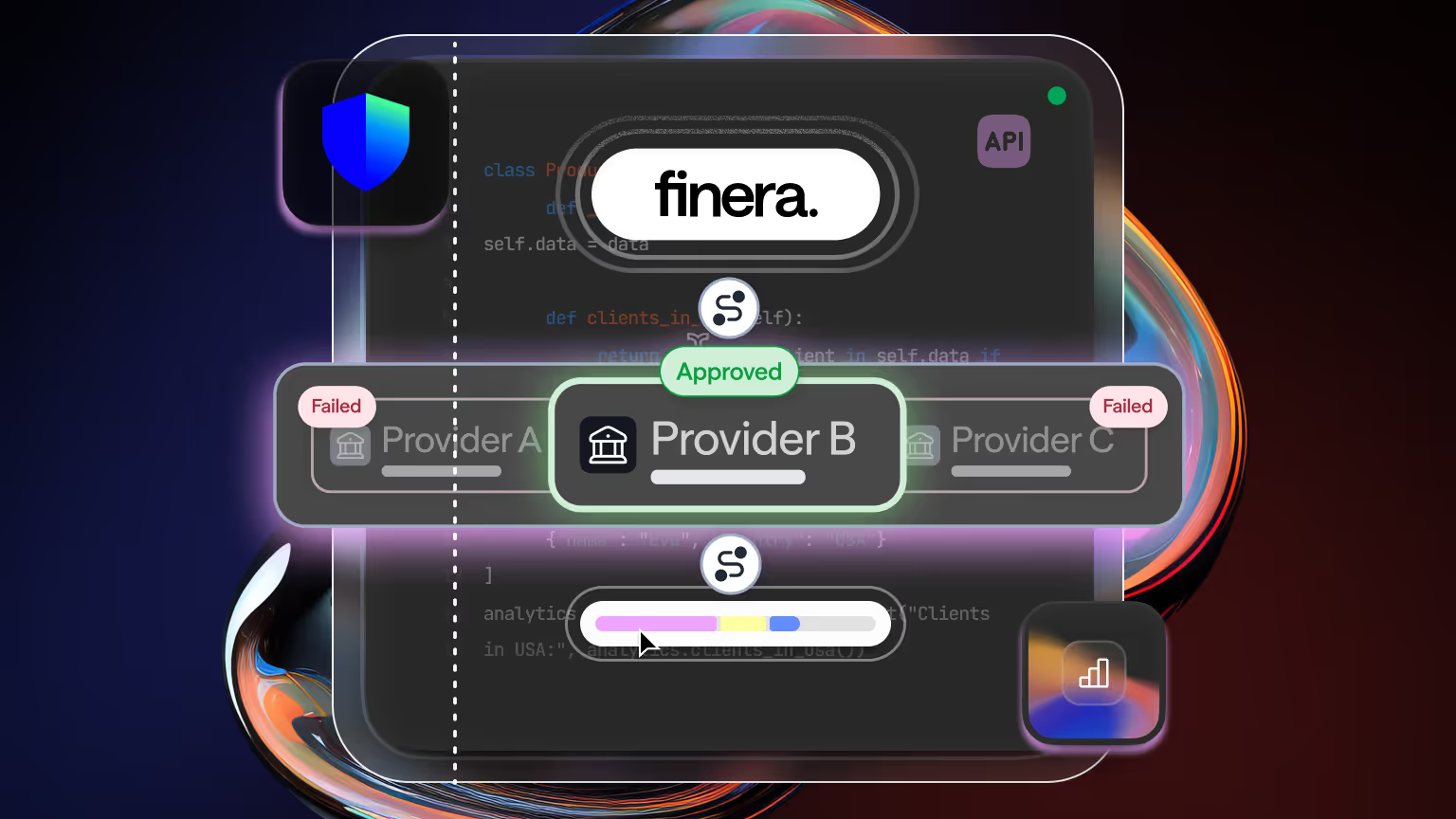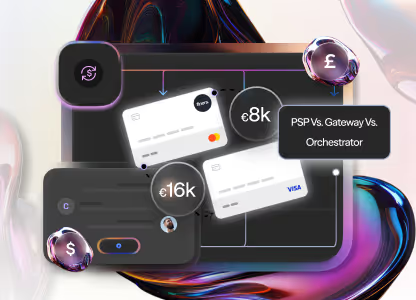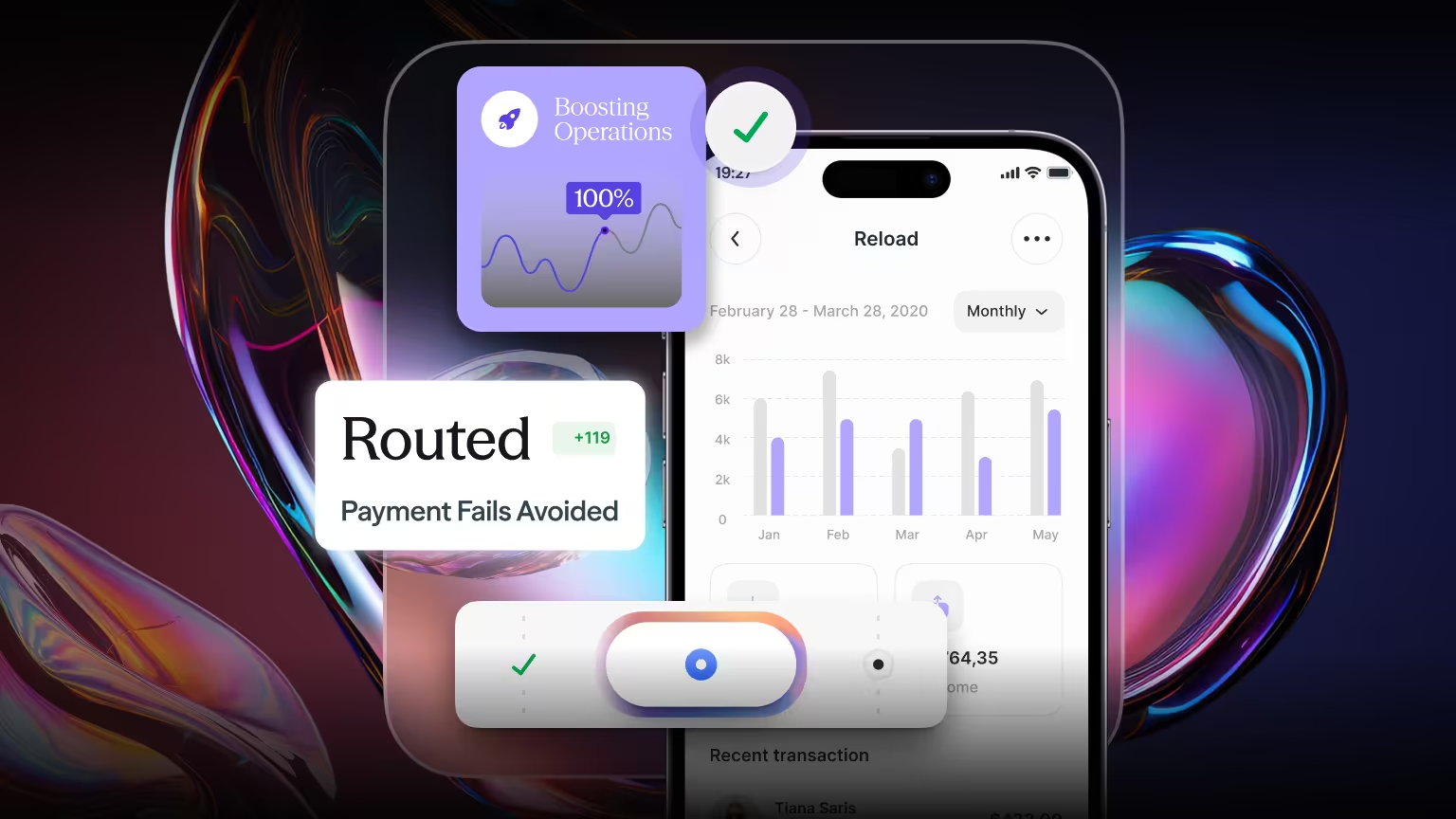Why Modern Businesses Need a Payment Orchestration Platform
See how payment orchestration boosts approvals and simplifies payments for modern businesses.

Global commerce has changed.
Today's businesses are no longer geographically limited but their payment infrastructure frequently lags behind too. From mobile-first shoppers in Southeast Asia to bank transfer preferences in Europe, customers expect fast, local and seamless payment options, wherever they are.
This shift has raised the bar for merchants. No longer is it enough to plug into a single payment provider and hope for the best. Businesses must now handle a growing mix of currencies, devices, regulations and payment preferences without compromising on speed or user experience. That’s why forward-thinking businesses are turning to a payment orchestration platform as the backbone of their payment strategy.
Here’s the real question:
Is your current payment stack helping you scale or is it silently stalling your growth?
A payment orchestration platform connects multiple gateways, card acquirers, alternative payment methods (APMs) and open banking APIs, all through one unified API.
What Is a Payment Orchestration Platform?
A payment orchestration platform is a technology layer that connects, manages and optimises all of a business’s payment relationships, from card acquirers and gateways to local wallets and open banking rails. Rather than relying on a single processor or building one-to-one connections with providers, orchestration creates a single integration point to manage multiple providers through one unified platform.
This orchestration layer routes payments based on real-time performance, cost, geography or custom business rules. It also supports multi-currency transactions, fraud controls and reconciliation, without needing to switch between multiple systems or interfaces.
Unlike traditional payment service providers (PSPs) or gateways, which typically lock merchants into a single infrastructure, orchestration allows full flexibility and control. You can work with multiple PSPs and acquirers simultaneously and switch or expand providers without re-architecting your stack.
In essence, orchestration gives you centralised control over a decentralised payment strategy.
Authorisation Rates Improve with Smart Orchestration
Research covered by Finextra shows that UK e-commerce checkouts average only a 58% conversion rate, with most drop-offs occurring at the payment stage. Yet simple improvements, such as offering the top three payment methods in a region, can increase conversions by up to 30%. With orchestration, approval rates on routed transactions can reach 90–95%, unlocking the recovery of revenue previously lost to friction.
Meanwhile, PYMNTS highlights that orchestration drives consistent, higher authorisation rates by enabling fallback routing to alternative acquirers when primary providers decline. This redundancy translates into fewer lost sales and stronger resilience during provider downtime.
The Limitations of Traditional Payment Setups
Most businesses start with a single PSP or gateway. It’s simple, quick to launch and reduces technical overhead, at first. But as soon as you expand into new regions or face volume pressure, these single-provider setups start to show cracks.
For one, they typically offer rigid routing. Payments are sent through one fixed path, regardless of performance or cost, leading to higher failure rates, especially in cross-border scenarios. When a transaction fails, there’s often no fallback. That means lost revenue, frustrated customers and no easy workaround.
You are also limited in your ability to optimise fees or approval rates. Different acquirers may offer better rates or higher success in certain geographies but you can’t access them without another integration, delaying time to market.
Vendor lock-in is another issue. Relying on a single PSP means that if they increase fees, reduce features or suffer outages, your business has no immediate recourse. It creates a fragile dependency that can impact everything from profitability to brand perception.
Finally, visibility is poor. With fragmented reporting and limited data insights, businesses often lack a clear picture of what’s working or where they are losing money.
Modern businesses operate in an environment where speed, trust, and adaptability drive conversions and traditional payment setups are no longer fit for purpose.
Key Payment Orchestration Benefits for Modern Businesses
A strong payment orchestration solution offers invaluable advantages for companies seeking to improve global acceptance and reduce payment friction. By intelligently routing transactions through the best-performing acquirer or gateway, merchants increase authorisation rates and reduce overall payment processing costs.
When a chosen provider declines, orchestration automatically retries using an alternative route, ensuring that international payments don’t fail due to regional inconsistencies or issuer distrust. This smart routing engine across multiple PSPs and acquirers turns what used to be lost revenue into recovered conversions.
Moreover, support for local payment methods and wallets like GCash, PIX or BLIK allows merchants to accommodate consumer preferences in each target region. This isn't an incremental convenience. It’s mission-critical for maximising acceptance in markets where cards alone won’t suffice.
With a multi-currency payment settlement system, funds can be routed directly in the customer’s local currency, which lowers FX fees and enhances clarity during reconciliation.
At the same time, orchestration platforms provide real-time transaction analytics and full-stack insight, giving teams visibility into acceptance rates, failure reasons, routing performance, and fee structure. This visibility simplifies strategy planning, PSP negotiation and routing optimisation.
From cost-containment to scalability and performance insight, the largest benefit of a merchant-grade orchestration platform is that it evolves with your global expansion, rather than becoming a blocker.
How Orchestration Improves Checkout and Conversion
Seamless checkout isn’t about removing steps but it is also about removing friction and cognitive load. Payment orchestration enables a fully embedded, branded checkout experience across devices, where customers can pay without being redirected off-site or forced to use a particular payment method.
Rather than pushing customers to card entry screens or forcing them to leave your domain for third-party workflows, orchestration layers let users pay online via wallets, open banking or stored tokens. This minimises drop-off and preserves the brand experience.
If a payment fails, orchestration can automatically fall back to another route, preventing unintended abandonment or duplicate product pages from being created. This resilient flow is essential for high-conversion payment processes across borders and device types.
Mobile-first users, especially, benefit from this streamlined architecture without pop-ups and no hidden redirects, just clean workflows that reflect local payment behavious. That directly translates into higher global conversion rates and better retention.
Who Benefits Most from Payment Orchestration?
All types of businesses operating in complex payment environments stand to gain the most: SaaS platforms billing globally, gaming platforms, marketplaces managing split flows and multi-currency payouts, fintechs offering embedded finance and travel platforms handling varying regional wallets.
If your business relies on subscription billing across geographies or needs to support alternative payment methods in multiple currencies, orchestration simplifies operations exponentially.
Digital platforms selling in emerging markets face region-specific preferences like local QR codes or open banking. Orchestration ensures you meet consumer expectations without rebuilding checkout or cataloguing providers manually.
Choosing the Right Payment Orchestration Partner
Not all orchestration platforms are created equal. Strategic flexibility is essential: the ability to easily onboard new local payment methods, operators across fiat currencies or support open banking rails is key to scaling fast. Reliable infrastructure and 24/7 merchant support ensure that your payments remain live even under high volume or market disruptions.
Vendor neutrality is especially important: your provider should empower you to switch acquirers or wallets without re-architecting checkout.
finera.: Your Payment Orchestration Platform for Growth
At finera., we deliver a diverse payments ecosystem tailored for global growth. Our solutions connect you seamlessly to a broad network of card acquirers, regional alternative payment methods and open banking rails.
With smart routing, finera. directs payments to the optimal path based on geography, method, performance or cost. Our platform supports multi-currency settlement, tokenised payments, built-in fraud controls, and embedded checkout flows, while delivering reconciliation data that gives you full visibility and financial oversight.
Supported by 24/7 merchant service and scalable infrastructure, finera. enables flexibility while reducing operational complexity. If you are launching in new regions or want to optimise existing payment flows, our orchestration platform helps you scale smarter and capture more revenue without complicating your stack.
Payments Should Power Growth, Not Hold It Back
Relying on a single payment provider or regional method is a strategic weakness. Payment orchestration offers the flexibility, resilience and insight needed to drive growth across borders and reduce costs in doing so.
Why settle for static checkout when you can offer global payment options that adapt, fail-safe, and convert? A payment orchestration platform turns payments from a constraint into a competitive advantage.
Talk to our team today to see how we can give your business greater control, better acceptance and smarter payments across all markets.
This article on payment methods is for informational and educational purposes only.
- Not Professional Advice: The content provided does not constitute financial, legal, tax, or professional advice. Always consult with a qualified professional before making financial decisions.
- No Liability: The authors, contributors, and the publisher assume no liability for any loss, damage, or consequence whatsoever, whether direct or indirect, resulting from your reliance on or use of the information contained herein.
- Third-Party Risk: The discussion of specific payment services, platforms, or institutions is for illustration only. We do not endorse or guarantee the performance, security, or policies of any third-party service mentioned. Use all third-party services at your own risk.
- No Warranty: We make no warranty regarding the accuracy, completeness, or suitability of the information, which may become outdated over time.
Frequently Asked Questions

Still Have Questions?
Let’s Find the Right Solution for You
Stay Connected with Us!
Follow us on social media to stay up to date with the latest news, updates, and exclusive insights!







.avif)
